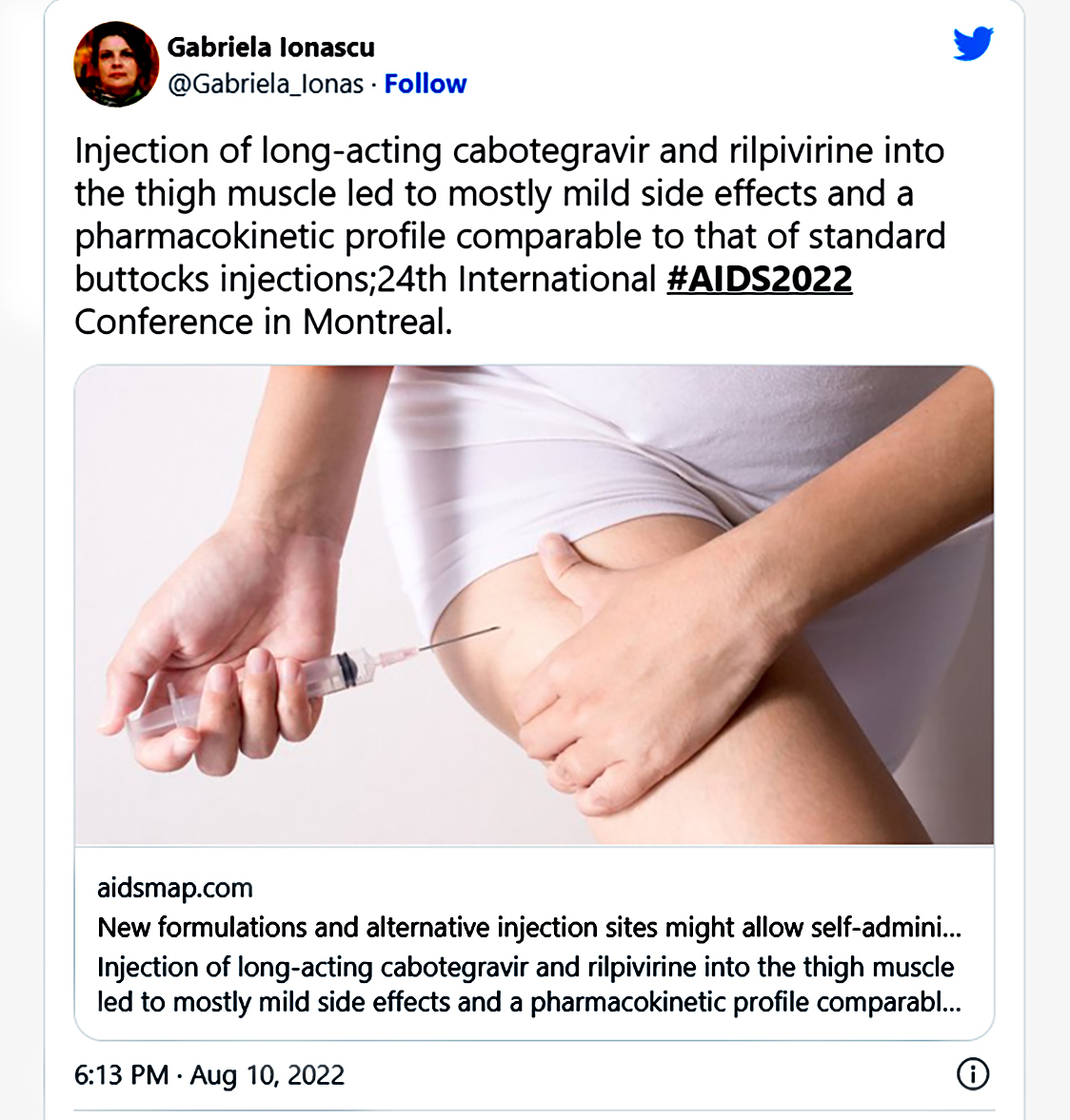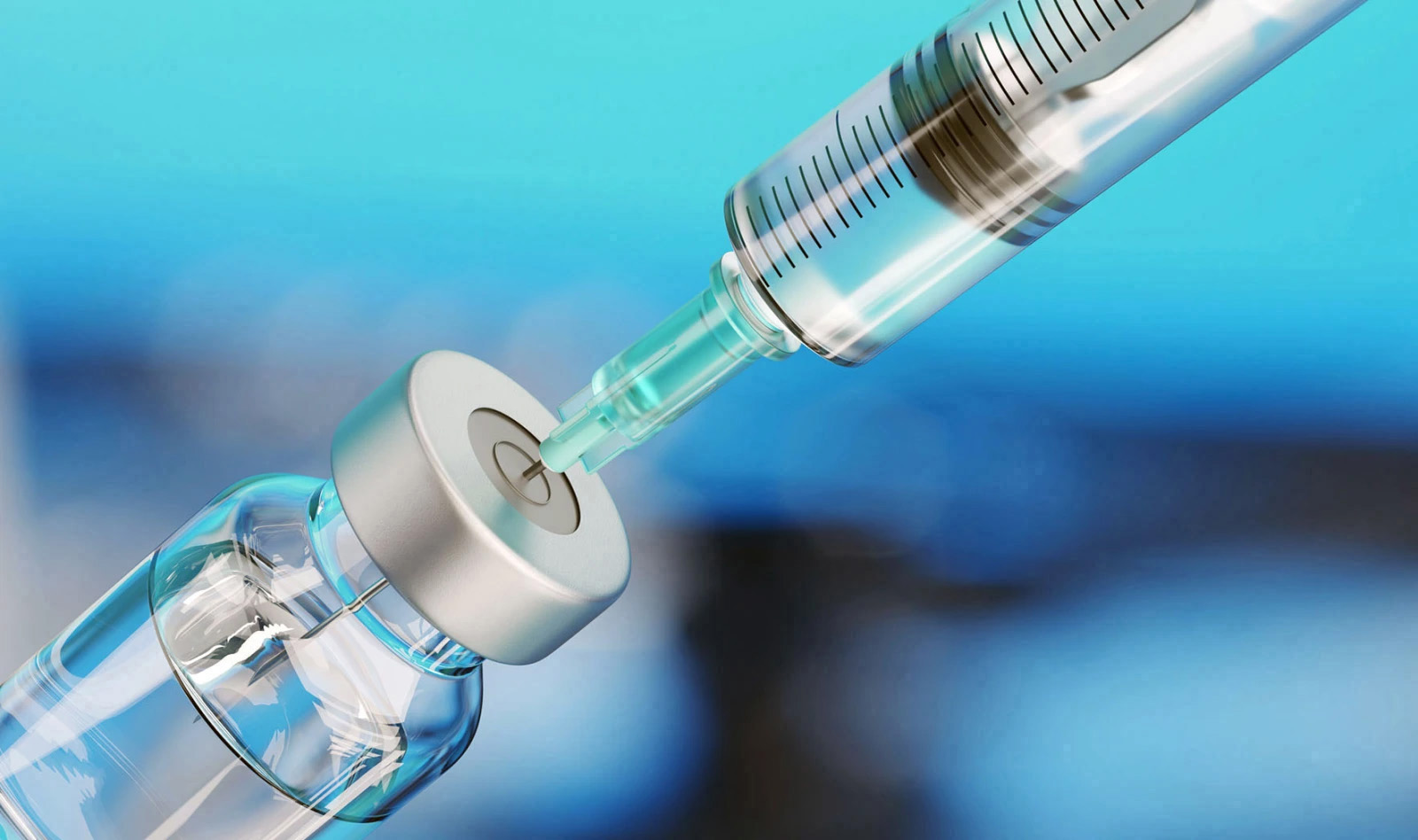SPOTLIGHT SYNOPSIS
Aids 2022 – the latest on long-acting HIV prevention and treatment

This is a summary of some of the latest developments on long-acting therapies for HIV presented at the 2022 International Aids Conference.
Advances in long-acting formulations of antiretroviral medicines were one of the most exciting areas of HIV research showcased at the recent International Aids Conference in Montreal, Canada.
The only long-acting antiretroviral product approved so far in South Africa is a vaginal ring used for HIV prevention. The ring contains the drug dapivirine and provides protection for one month. An HIV prevention injection administered every two months is expected to be green-lighted soon. Such use of antiretrovirals to prevent HIV infection is referred to as pre-exposure prophylaxis (PrEP). PrEP in the form of pills (oral PrEP) is already available in the public sector in South Africa.
Updated findings on prevention injection
In November 2020, Spotlight reported on a landmark study called HPTN084 that showed that an HIV injection administered every two months is highly effective at preventing HIV infection. Since then, the injection, commonly referred to as CAB-LA (long-acting cabotegravir), has been approved by the US Food and Drug Administration, and a growing chorus of stakeholders around the world and in South Africa have called for its rapid roll-out.
 Those calls will be strengthened by new data from HPTN084 presented at the conference by Professor Sinead Delany-Moretlwe, director of research at the Wits Reproductive Health and HIV Institute (Wits RHI).
Those calls will be strengthened by new data from HPTN084 presented at the conference by Professor Sinead Delany-Moretlwe, director of research at the Wits Reproductive Health and HIV Institute (Wits RHI).
HPTN084 compares the use of CAB-LA to daily oral PrEP (tenofovir and emtricitabine). Delany-Moretlwe presented data on new HIV infections in the study from November 2020 to November 2021. Twenty-three new infections were detected in that time, with three in the CAB-LA group and 20 in the oral PrEP group. This brings the cumulative number of HIV infections seen in the study so far (the blinded and unblinded period) to 62 – six in the CAB-LA group and 56 in the oral PrEP group. This data came from 3,223 people – 1,613 in the CAB-LA group and 1,610 in the oral PrEP group.
“Overall, HIV incidence was less than 1% across both groups, with participants in the cabotegravir group now estimated to have an 89% lower risk of HIV infection compared with those in the TDF/FTC (tenofovir and emtricitabine) group across both the blinded and unblinded period,” she said.
War against HIV – we have the drug to stop it, yet the world is at a turning point once more
The difference between the two groups is thought to be largely driven by differences in adherence. When taken as prescribed, oral PrEP is thought to be about 99% effective at preventing HIV infection.
Injections every three months?
Currently, the protection from a CAB-LA injection lasts for two months. While many will consider this a huge improvement on daily pills, injections that give protection of three or even six months would be even better. A first step towards such even longer-acting CAB-LA formulations is to test how well people tolerate larger or more concentrated doses.
 Paul Benn, early development lead at ViiV healthcare (the pharmaceutical company that makes CAB-LA), presented interim results of a phase I study of 88 participants. The study tested the potential of using a more concentrated formulation of CAB-LA – 400mg/ml compared with the approved dosage of 200mg/ml (in other words, double the cabotegravir contained in the same volume). The researchers also compared administration using intramuscular injections with subcutaneous (just under the skin) injections. The CAB-LA product approved in the US is given via intramuscular injection. A potential benefit of subcutaneous injections is that they may allow for self-administration.
Paul Benn, early development lead at ViiV healthcare (the pharmaceutical company that makes CAB-LA), presented interim results of a phase I study of 88 participants. The study tested the potential of using a more concentrated formulation of CAB-LA – 400mg/ml compared with the approved dosage of 200mg/ml (in other words, double the cabotegravir contained in the same volume). The researchers also compared administration using intramuscular injections with subcutaneous (just under the skin) injections. The CAB-LA product approved in the US is given via intramuscular injection. A potential benefit of subcutaneous injections is that they may allow for self-administration.
According to Benn, the overall safety profile of CAB-LA 400mg/ml was similar to that of CAB-LA 200mg/ml. And most adverse events were not severe, with injection site reactions being the most commonly reported. The 400mg/ml dose was found to be absorbed faster than the 200mg/ml dose and the four-weekly dosing resulted in plasma concentrations that were within the range of CAB-LA 200mg/ml. What the faster absorption might mean for the future development of CAB-LA 400mg/ml is not clear.
Subcutaneous administration was associated with more side-effects than intramuscular injections, but, as the researchers pointed out, the numbers were small. (AIDSMap did a good write-up of this and another study here.)
These were only interim findings and a clearer, more certain picture should emerge as the study progresses. Part two of the study, set to conclude in 2023 according to the ClinicalTrials.gov entry for the trial, is set to explore the administration of CAB-LA injections every 12 weeks (three months).
CAB-LA seems safe with hormone therapy
The aforementioned HPTN084 study together with another one called HPTN083 makes up the most important pieces of evidence for CAB-LA. HPTN083 was conducted in cisgender men who have sex with men and transgender women and the results were first reported in 2020.
 Now, a new analysis from HPTN083 presented at Aids 2022 explored whether gender-affirming hormonal therapy affects cabotegravir concentrations in the body.
Now, a new analysis from HPTN083 presented at Aids 2022 explored whether gender-affirming hormonal therapy affects cabotegravir concentrations in the body.
Of the 4,566 participants enrolled in the HPTN083 study, 12.5% were transgender women. Among this group, 57.9% were taking gender-affirming hormonal therapy.
Visit Daily Maverick’s home page for more news, analysis and investigations
The researchers compared results from a subset of 30 transgender women taking gender-affirming hormone therapy with 23 participants who were not. The good news is that cabotegravir drug concentrations were found to be comparable between the two groups.
After setback, implant research continues
As with contraceptives, some people might find implants that can provide protection for a year or longer to be more convenient than regular injections. Until late in 2021, the lead candidate for such a long-acting implant was a drug called islatravir. In a major setback, however, it was announced in December that trials of islatravir were being put on hold after the drug was associated with falling CD4 counts in some trials (a person’s CD4 count is a good measure of the health of the immune system).
Africa grapples with treating HIV and rising cases of chronic diseases
While it remains unclear whether islatravir still has a future for use in implants, early-stage research presented at the conference suggests cabotegravir may, in addition to injections, also be a viable candidate for use in implants.
Isabella Young, a third-year PhD student at the University of North Carolina at Chapel Hill in the Eshelman School of Pharmacy, presented findings from a study on the safety and pharmacokinetics (PK) of an injectable, biodegradable and removable implant containing cabotegravir. The study took the form of a 90-day PK and 30-day safety study in female mice. Plasma samples were collected throughout to measure the concentrations of cabotegravir and markers of inflammation. On day 90, the implants were removed to measure how much cabotegravir was left and evaluate how the polymer had degraded.

An HIV prevention injection administered every two months is expected to be green-lighted soon. (Photo: iStock)
The study demonstrated sustained release of cabotegravir in the mice for 90 days and the implants were found to be well tolerated and safe with only mild to moderate local inflammation. It is very early days, but promising.
Potential use of nanoparticles
Another small study investigated an unusual approach to the problem of low antiretroviral penetration in secondary lymphoid tissues. In addition to making treatment even more effective, getting antiretrovirals to flush the virus from these HIV hiding places might one day play a role in curing HIV.
HIV’s ability to persist at low levels in such hiding places is a key reason it is difficult to cure and why the virus starts replicating again if someone stops taking antiretroviral therapy.
Nanoparticles loaded with the antiretrovirals rilpivirine and cabotegravir, were designed to target specific macrophages – a type of white blood cell – and establish drug depots in certain compartments in the body. The idea is that the two antiretrovirals would then be slowly released from these depots over time.
The work presented at the conference was only from experiments in the lab and in mice but it did demonstrate some potential for nanoparticles as a long-acting platform for HIV treatment and prevention. It is, of course, still very early days and only time will tell if anything like this ever reaches pharmacy shelves. DM/MC
This article was published by Spotlight – health journalism in the public interest.


















 Become an Insider
Become an Insider
Comments - Please login in order to comment.